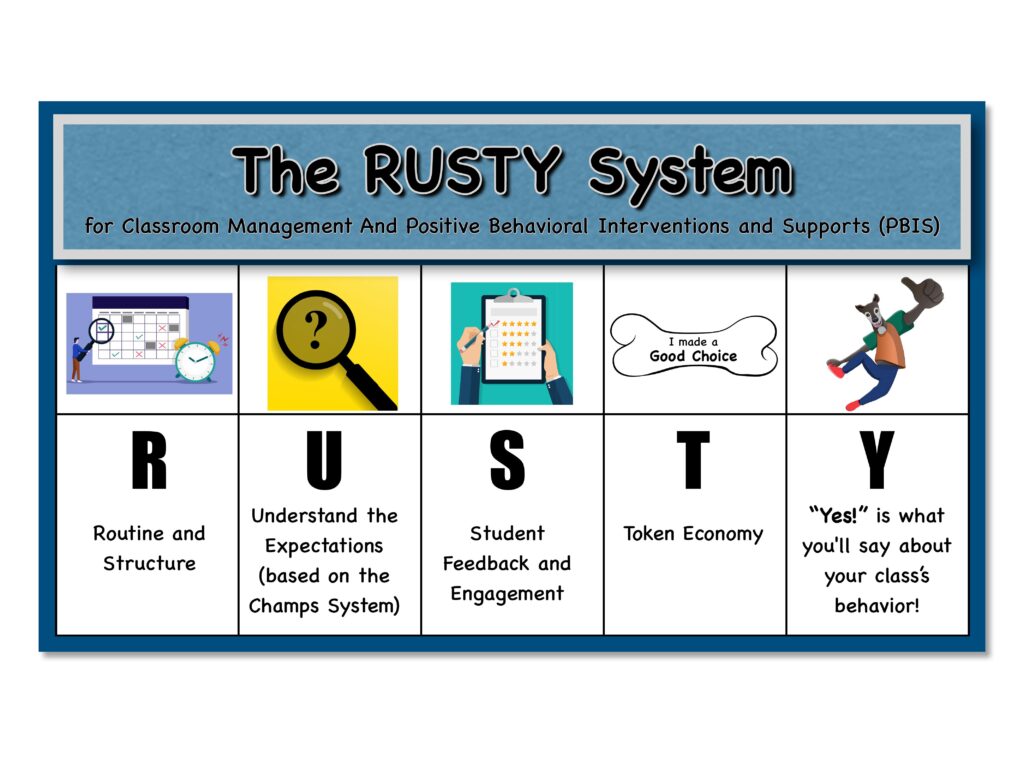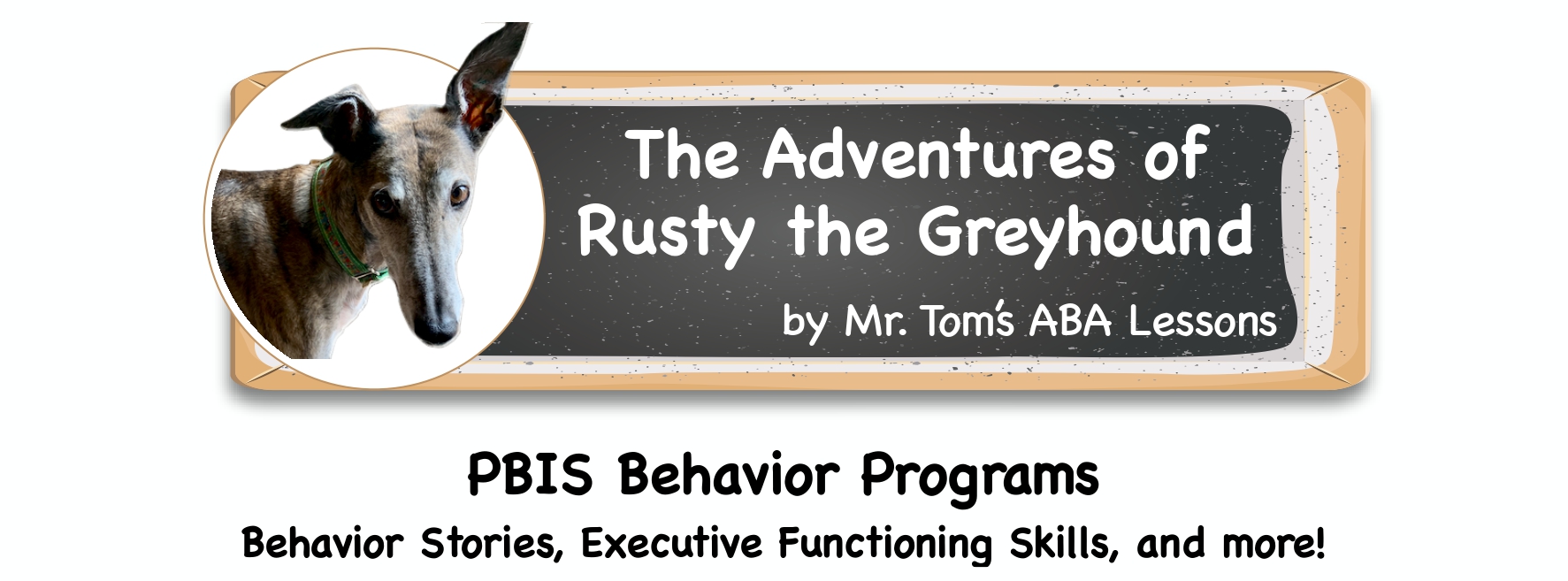The RUSTY System for Classroom Management And Positive Behavioral Interventions and Supports (PBIS)
As a professional educator, you know how behavior influences your classroom environment for better or worse. With countless moving parts to consider in any education atmosphere, you might wonder where to start. The RUSTY System for Classroom Management And Positive Behavioral Interventions and Supports (PBIS) is something that I have created to help teachers understand and implement basic ABA strategies in their classrooms for better classroom management. RUSTY is an acronym for:

R: Routine and Structure
U: Understand the Expectations (based on the Champs System)
S: Student Feedback and Engagement
T: Token Economy
Y: “Yes!” is what you’ll say about your class’s behavior!
First, implement a daily Routine and Structure in your classroom.

A routine helps students know what to expect. This strategy reduces stress for the students and creates many opportunities for them to practice the skill.
By setting up a routine for your classroom and other teachers, you create a consistent behavior protocol between activities and teachers. This way, everyone has the same expectations for the same activities.
You can also have a routine for getting your students’ attention, like clapping your hands, flashing the lights, or giving a basic direction if they hear you. For example, try “anyone who hears me touch your head.”
You can also have a routine for following-directions rules. Your rule might be “when the teacher is talking, you have eyes on the teacher, a quiet mouth, a quiet body, and listening ears.”
When your students Understand the Expectations, they know what to do during an activity.

I based this strategy on the CHAMPS System. How loud can they talk during the activity? How should the student ask for help? Should they ask you, a friend, or figure it out for themself?
What is the activity? Each activity can have different expectations, so this implementation can change depending on the activity. When can the students move around, and what can they do? What do they do when they are finished with the activity? And finally, what supplies do they need or what else do they need to do?
Bonding with the student is the first step to giving Student Feedback.

If you haven’t bonded with the student, they will not be receptive to any corrections you will later need to give. Going around the room and checking in with all your students is a great way to bond with them. This implementation is for both play and work time. You don’t need to play for 10 minutes with each student, but joining them in play, or while they are doing their work, for a couple of minutes is a great way to bond with them.
Immediate and Specific Praise is critical. Some examples are giving a high five, showing a thumbs up, and saying “great job for doing [something specific].” You should give five praises for every correction. So, you have to catch your student making a good choice.
A great way to reduce giving corrections is to not mention the non-dangerous behaviors but instead redirect the student back to the activity. Direct them to a functional activity instead. For example, if a student is writing on the desk you might say “[Name], please write on your paper.” Don’t forget to praise the students who are making a good choice in place of calling attention to the ones who are not.
Modeling the behavior or activity is a great way to help the students to understand what is expected of them. This will also reduce any negative behaviors. Some students will need to have the activity broken down into smaller pieces. This could be a one-step direction in place of two. If you are implementing a Routine and Structure, the repetition of following the same one-step direction will help them understand what to do, and they will quickly start to understand the expectations. You have to be consistent with giving feedback.
A Token Economy is significant.

Think of this as a paycheck for your students. If you were not getting paid to teach, your willingness to teach would be less especially on those days you would rather be doing something else. Your paycheck doesn’t reduce your satisfaction of seeing the kids learn and grow but your paycheck helps you get through those hard times. Kids are the same way. They just need to be paid in a different way. Some activities and days they will want to do all the activities but on other days or activities, they want to do something else. The paycheck will help them get through those hard times. You can do a whole class reward or individual rewards.
Motivation checklists are great for seeing what the students want to work for. What the reward is should depend on the student and class. Rewards can change over time. You can even give your students choices of different prizes.
“YES,” their behaviors are getting better.

My classroom is now manageable. Yes, doing the RUSTY System will take time, but it will be worth it!




Great resource